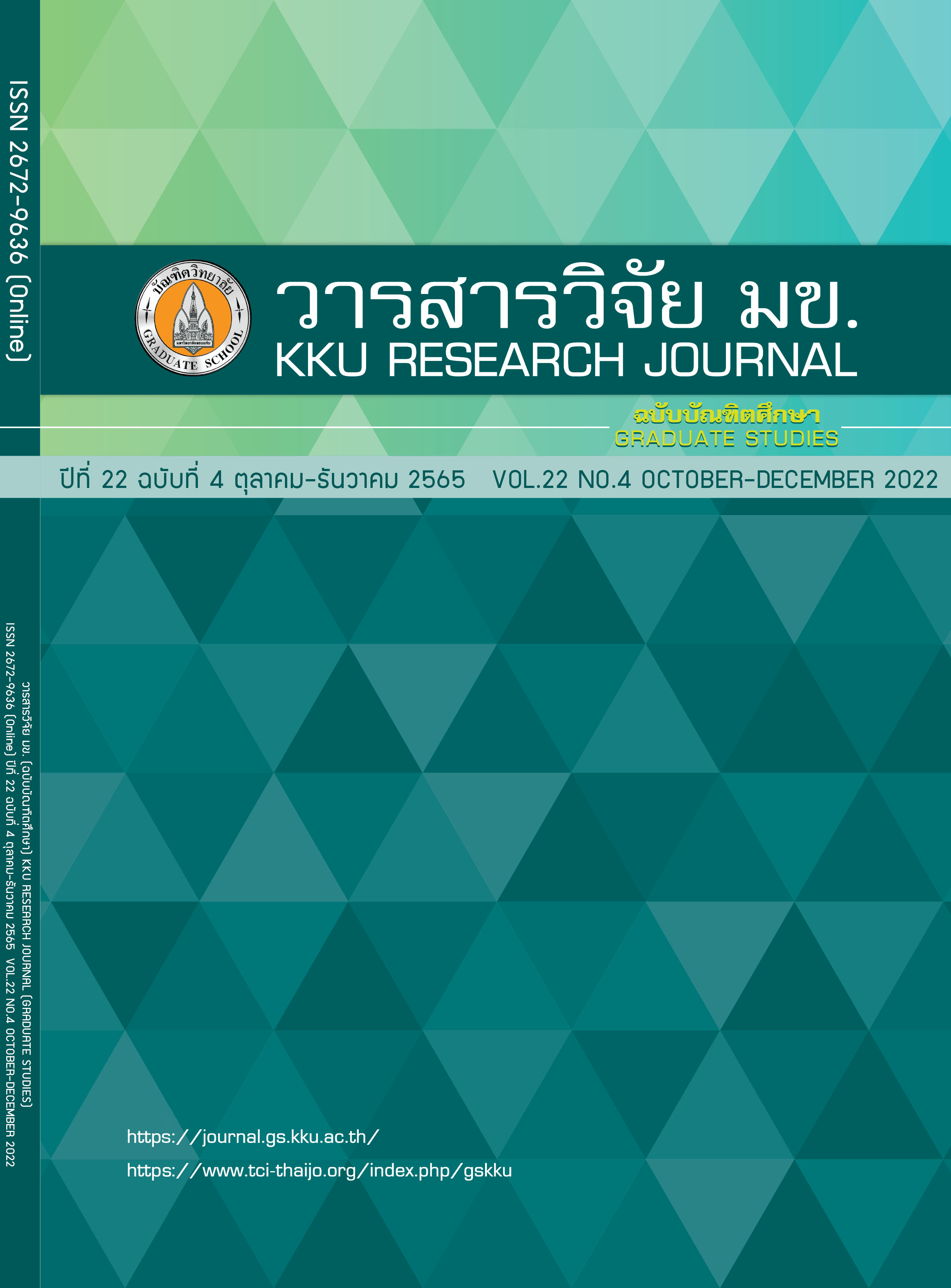The Study of Phong River Bank Erosion at Ban Nong Hin, Northeastern Thailand
Keywords:
River bank erosion, Submerged jet test, Phong river bankAbstract
The river bank erosion is a major process to decrease a slope stability of the river bank, and then the slope can be failure. The Phong river bank at Ban Nong Hin, Northeastern Thailand is the research site in this study. The purposes of this study are to find and recheck the value of erodibility parameters of Phong river bank for predicting the erosion distance in the future. The erosion is occurred by the erosion rate (ɛ) is over than zero. The significant parameters are the boundary shear stress ( o), the critical shear stress ( c) and the erodibility coefficient (kd). The water velocities are collected by the River Surveyor M9 equipment and the water-tele of the Electricity Generating Authority of Thailand. The field-testing results of the Submerged Jet Test are analyzed to predict the critical shear stress and the erodibility coefficient in each soil layers. The three differential methods for predicting the parameters are Blaisdell solution, Scour Depth solution and Iterative solution.Finally, the erosion distances are compared to the changed cross section of slope in 192 days. The erosion distance after surveying the new cross section is 3.73 m. The erosion distances of Blaisdell solution are 58.99 m. and 219.78 m., it’s an overprediction. The erosion distances of Scour Depth solution and Iterative solution are 0.00 m., it’s an underprediction. The probable factor that affected to this study is the variable density in each level of the soil layers. The test at the riverside and increasing the quantity may affect to predict the erosion distances more precisely.
References
Tanit C, Tanan C. Riverbank retreat and erosion protection of the U-Tapao river in Songkhla province [Thesis]. Songkhla: Prince of Songkla University; 2016. Thai.
Standard test method for erodibility determination of soil in the field or in the laboratory by the jet index method (ASTM D5852). West Conshohocken (PA): ASTM – American Society for Testing Material (US); 2000 Feb.
Daly ER, Fox GA, Al-Madhhachi AT, Miller RB. A scour depth approach for deriving erodibility parameters from Jet erosion tests. ASABE. 2013; 56(6): 1343–1351.
Hanson GJ, Simon A. Erodibility of cohesive streambeds in the loess area of the Midwestern USA. Hydrol Process. 2001; 15(1): 23–38.
Hanson GJ, Cook KR. Apparatus, test procedures, and analytical methods to measure soil erodibility in situ. Appl Eng Agric. 2004; 20(4): 455–462.
Crosato A. Effects of smoothing and regridding in numerical meander migration models. Water Resour. 2007; 43.
Chow. Open channel hydraulics. Davis EH, editor. McGraw-Hill; 1959.
Julian JP, Torres R. Hydraulic erosion of cohesive riverbanks. Geomorphology. 2006; 76(1-2): 193-206.
Karmaker T, Dutta S. Erodibility of fine soil from the composite river bank of Brahmaputra in India. Hydrol Process. 2011; 25: 104-111.
Smerdon ET, Beasley RT. Critical tractive forces in cohesive soils. Agr Eng. 1961; 42(1): 26-29.
Simon A, Thomas RE, Klimetz L, editors. Comparison and experiences with field techniques to measure critical shear stress and erodibility of cohesive deposits. Proceeding of the 2nd Joint Federal Interagency Conference; 2010 June 27 – July 1; Las Vegas, US.
Wynn TM. The effects of vegetation on streambank erosion [PhD dissertation]. Blacksburg, Va: Virginia Tech, Department of Biological Systems Engineering; 2004.
Blaisdell FW, Anderson CL, Hebaus GG. Ultimate dimensions of local scour. J Hydraul Eng Div. 1981; 107(HY3): 327-337.
Downloads
Published
Issue
Section
License
Copyright (c) 2022 KKU Research Journal (Graduate Studies)

This work is licensed under a Creative Commons Attribution-NonCommercial-NoDerivatives 4.0 International License.



